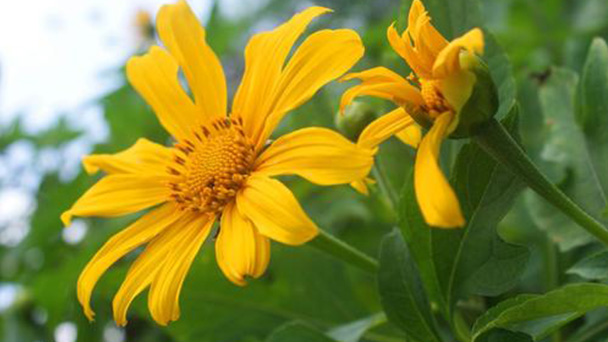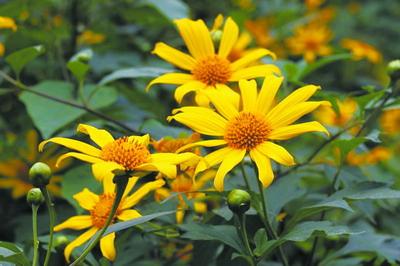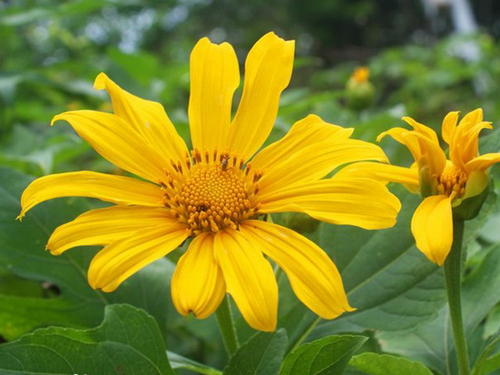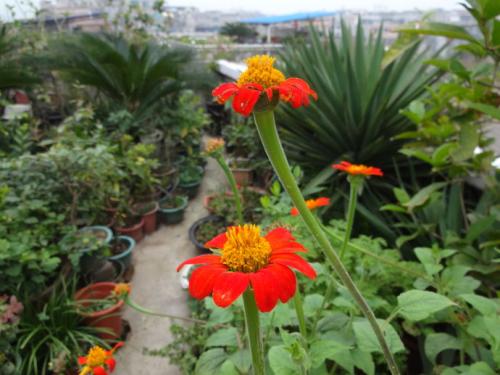The breeding methods and precautions of Tithonia diversifolia
Written by Maggie
Nov 21 2020

In the course of cultivation in Tithonia diversifolia, wet and loose sandy soil with fertility is selected in the first place, and organic fertilizers diluted with 1 to 2 times are required to be applied in August. In autumn, apply twice 0.2% potassium dihydrogen phosphate or superphosphate on the leaves. At ordinary times when curing but also control the amount of water, do wet and dry combination. The duration of light should not be less than 4 hours per day.
Tithonia Diversifolia picture

Aquaculture methods of Tithonia Diversifolia
1. Reasonable soil quality
Tithonia diversifolia is a plant endemic to subtropical zones. Reasonable soil quality is one of the breeding methods and precautions in Tithonia diversifolia. It is highly adaptable to soils, tolerant of drought and exhaustion, and can grow on all types of soils, but it grows more vigorously on moist, loose and fertile sandy soils.
2. Apply fertilizer frequently
But the demand for fertilizer of Tithonia diversifolia is greater. In order to promote the rootstock robustness of Tithonia diversifolia, 1 ~ 2 times of diluted organic fertilizer water is needed in August. Fertilize twice in the autumn, and apply 0.2% potassium dihydrogen phosphate or superphosphate on the leaf surface to promote flowering, and mix with water after fertilization.
3. Water and moisturize
Water demand is not large for Tithonia diversifolia, and water consumption must be controlled in ordinary conservation and combination of dry and wet. Spring and summer growth period can be appropriate to irrigate a few more water, maintain the growth and development of chrysanthemum swollen stalk. In winter when it comes into the dormant period, it can be less watering or even not watering.

4. Plenty of sunshine
The light duration of Tithonia diversifolia should not be less than 4 hours a day, which may be detrimental to its normal growth. Wherever they are planted, they need plenty of sunlight to sustain their growth, especially during the colder winters.
Precautions in cultivation of Tithonia diversifolia
Water should be reduced during flowering of Tithonia diversifolia, and the lower part of plants with yellow and fine leaves should be pruned at all times, which is beneficial to ventilation and light transmission among branches and leaves. The diseased plant should be removed in time and then disinfected with lime in the soil around the diseased plant.

Latest Updated
- Benefits of Bugleweed - 7 Science-backed Health Benefits
- Bugleweed Dangers & Side Effects - Is It Poisonous?
- How to Plant Evergreen Trees - What You Should Know
- When to Plant Evergreens - Grow Guide for Evergreen Trees
- 12 Wonderful Evergreen Shrubs for Your Garden
- 12 Popular Evergreen Plants with Pictures for Beginners
- When And How To Prune A Lilac Bush Like a Pro
- How to Grow & Care for Lilac Vine (Hardenbergia Violacea)
- Japanese Lilac Tree (Syringa Reticulata) Care & Propagation Guide
- Shumard Oak Pros and Cons - What to Know
Popular Articles
- Winter maintenance of Antirrhinum Majus
- How to Grow Terminalia Mantaly Tree
- How to Grow and Care for Crossostephium Chinense
- How to grow Antirrhinum Majus in spring
- Peristeria Elata (Dove Orchid) Profile: Info & Care Guide
- Underwatered Snake Plant (Sansevieria Trifasciata) - Signs And How To Fix
- How to Care for Brazilian Jasmine Plant (Mandevilla Sanderi)
- How to Grow & Care for Graptopetalum Purple Delight in Summer
- Rosa Chinensis (China Rose): Plant Growing & Care Tips
- How to Care for Baby Sun Rose (Aptenia Cordifolia)